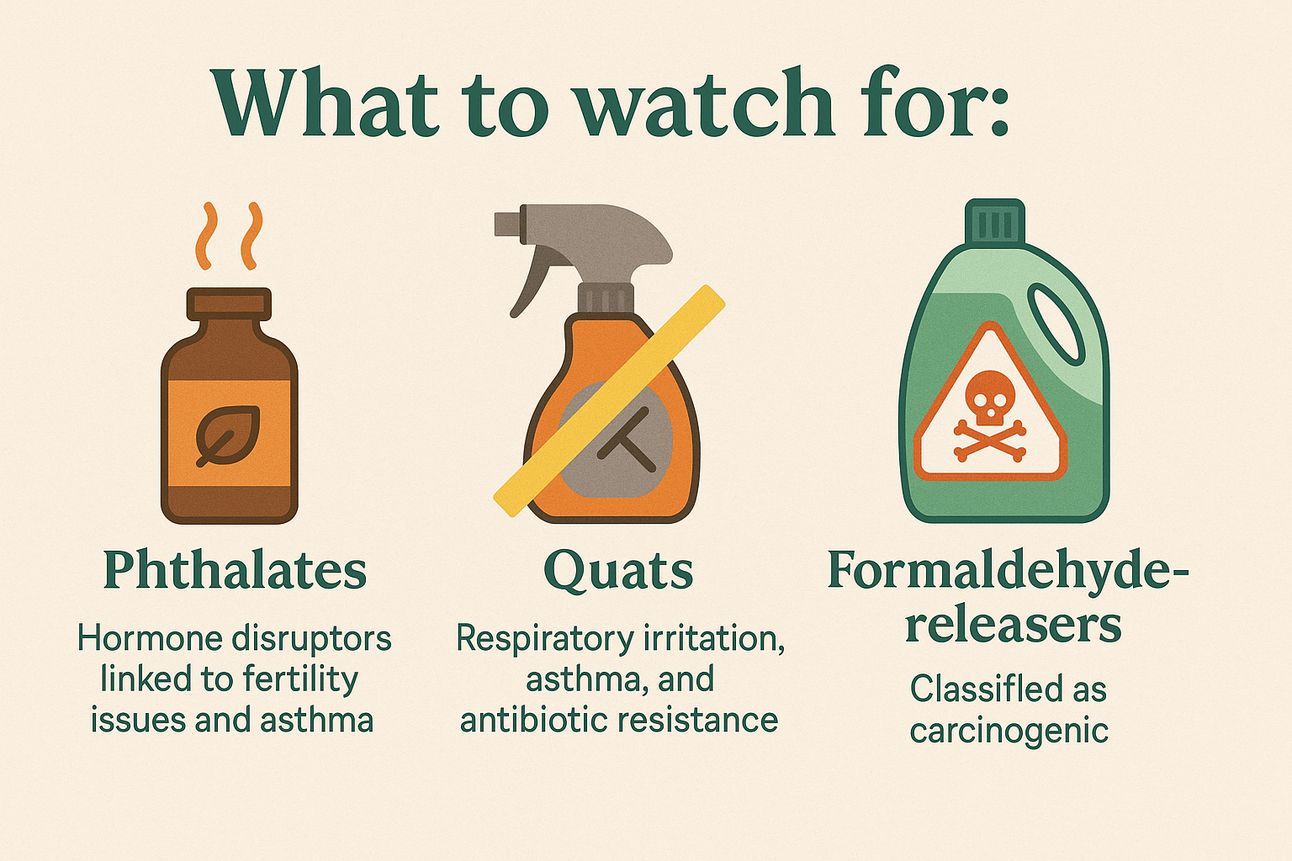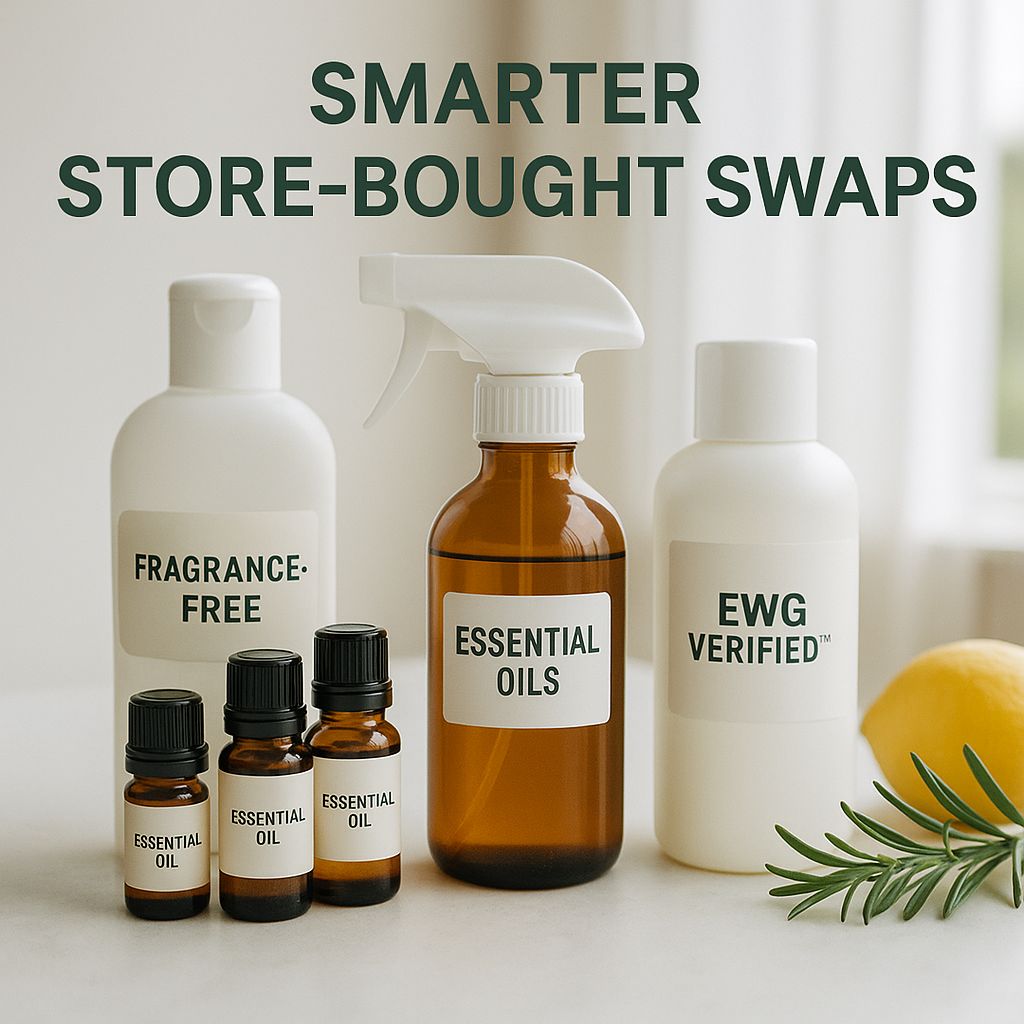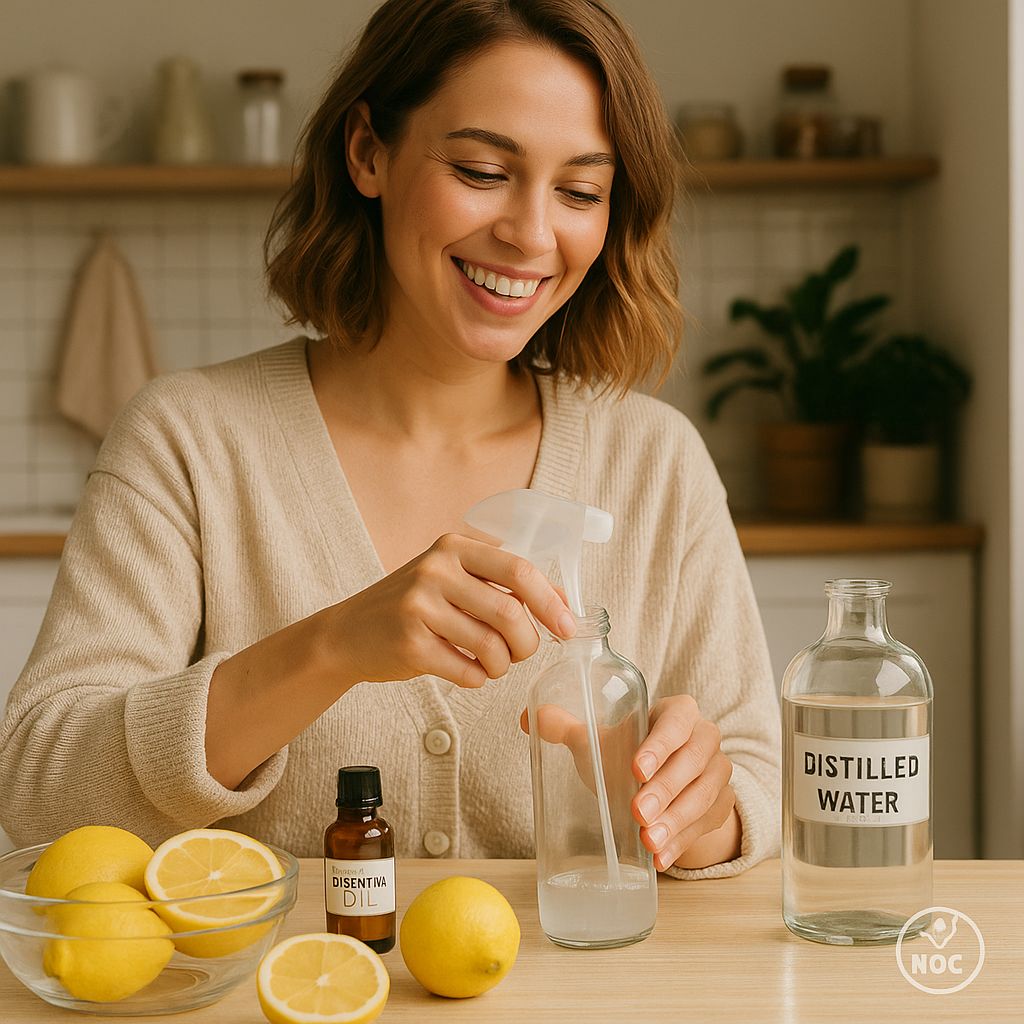🍋 That lemon-fresh scent might be doing more harm than good.
Air fresheners and antibacterial sprays aren’t as sweet as they smell. Here's what to swap—and how to DIY better.

Many popular cleaners and air sprays release hidden chemicals that linger in your air—and your body.
Indoor air pollution is a serious health issue. Studies link long-term exposure to VOCs from household products with headaches, eye irritation, asthma, COPD, endocrine disruption, and even cancer. People with asthma, pregnant women, and children are particularly vulnerable.
Here’s what science says, the toxins you want to avoid, and some easy replacements to use—and some recipes to make your own!
🔬 The Science
A study analyzing 30 common household cleaners, disinfectants, and air fresheners found these products emitted hundreds of volatile organic compounds (VOCs), including many known to be toxic or hazardous.
Indoor air levels of VOCs can be up to ten times higher than outdoors, and even everyday use of bleach and scented sprays significantly spikes indoor VOCs.

🔍 What to watch for:
Phthalates (in synthetic fragrances): Hormone disruptors linked to fertility issues and asthma.
Quaternary ammonium compounds (quats) (in antibacterial products): Tied to respiratory irritation, asthma, and antibiotic resistance.
Formaldehyde/formaldehyde-releasers (preservatives in some cleaners): Classified as carcinogenic and can trigger allergies or asthma.
Swaps
What You Can Do Today
🔄 Smarter Store-Bought Swaps

✅ Choose: fragrance-free, essential-oil‑based, or EWG-Verified cleaners
❌ Avoid: any product labeled “antibacterial” or promising “long‑lasting scent”
👍 Brands to try: Branch Basics, Attitude, Blueland
🍋 Easy & Effective DIY Recipes
✨ All-Purpose Cleaner

1 cup distilled white vinegar
1 cup distilled water
10–20 drops essential oil (lemon, tea tree)
Optional: 1 tsp castile soap
Directions: Combine, shake, spray. Ideal for counters & bathrooms. Avoid stone surfaces.
🌬️ Fresh Air Room Spray

¾ cup distilled water
2 tbsp witch hazel or vodka
15–20 drops essential oil (lavender, citrus, peppermint)
Directions: Blend, mist lightly into air or linens—no toxic cloud needed.
🍊 Zero‑Waste Citrus Vinegar Cleaner
Peels from 1–2 citrus fruits
White vinegar to cover
Glass jar with lid
Directions: Steep for 1–2 weeks in a cool, dark place. Strain, dilute 1:1 with water, and use as spray.
Next Steps
What You Can Do Today
Do a “toxic swap audit” of your cleaning supplies
Upgrade just 1 or 2 essentials—you don’t need to overhaul everything overnight
TL;DR
🚩 Avoid: phthalates, quats, formaldehyde-releasers
🏠 Found in: fragrances, antibacterial sprays, air fresheners
⚠️ Health risks: hormone disruption, asthma, cancer
✅ Swap to: trusted clean brands or simple DIY alternatives
Spread the love
Sharing is caring
Forward this newsletter to a friend or family member
Follow us for weekly updates and healthy swaps:
Stay informed, share the love—and as always, live healthy and happy!
—The No Toxins Club
Was this email forwarded to you? Join our club by subscribing here!

